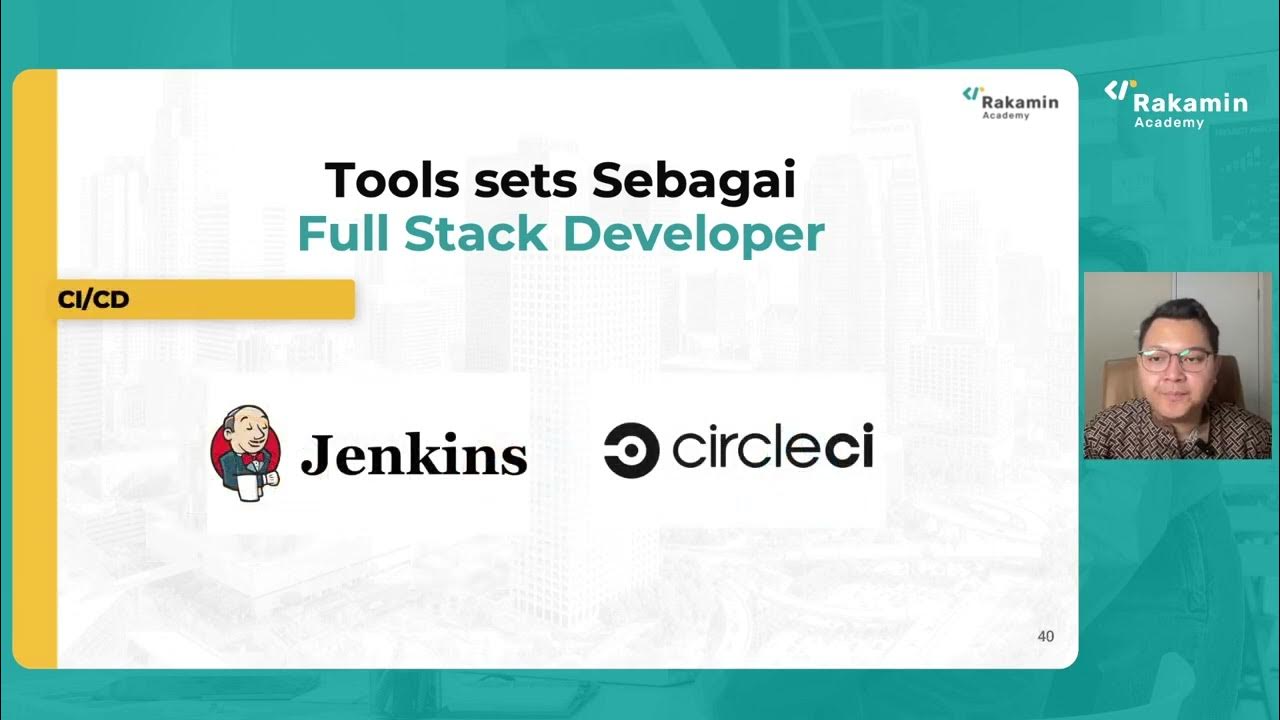Como usar caching no front-end para melhorar a performance do seu site? | #PR
Summary
TLDRIn this video, Mike Brito addresses a variety of questions related to frontend development, caching, unit testing, Git practices, and portfolio creation. He explains the benefits of caching in frontend development, introduces popular testing tools like Jest and Vitest, and offers tips on organizing Git commits and branches. Mike also emphasizes the importance of showcasing both coding and UI/UX design skills in portfolios, especially for developers skilled in both areas. The video is informative, offering practical advice and helpful resources for developers at different stages of their careers.
Takeaways
- 😀 Caching is a strategy to store data on the client-side (like HTML, CSS, JavaScript) to reduce server requests and improve website performance.
- 😀 LocalStorage is one of the methods you can use to store information in the browser, allowing faster access for the user.
- 😀 It's important to update cached data regularly to ensure that users always have the most recent version of content.
- 😀 Unit testing involves testing small pieces of code (like functions or components) to ensure they work correctly, and there are various frameworks to choose from.
- 😀 The most commonly used testing frameworks include Jest, Vitest, and Playwright, with each offering different strengths for frontend or backend testing.
- 😀 Good commit practices involve clear and concise messages, with a focus on summarizing what changes were made in a commit.
- 😀 It's important to structure your branches effectively to keep your code organized. For example, make smaller commits in different branches rather than letting a branch get too large.
- 😀 Tools like Husky can be used for commit hooks, automating tasks such as testing and file formatting, improving the workflow.
- 😀 When creating a portfolio, showcasing both your coding projects and design work (e.g., Figma) is a great way to demonstrate your full skill set, especially if you're both a frontend developer and UX/UI designer.
- 😀 A well-structured portfolio with case studies explaining your design process and technical implementation can help establish credibility and authority in your field.
- 😀 Mike Brito encourages viewers to join events like Rocket City Boost Week for career growth and to continue learning through available resources like books and videos on key development topics.
Q & A
What is the meaning of 'PR' as mentioned in the video?
-'PR' stands for 'Perguntas e Respostas' (Questions and Answers). It refers to a segment in the video where viewers submit their questions, and the host, Mike Brito, responds to them.
What is caching, and how does it work in front-end development?
-Caching is a technique where certain information, such as HTML, CSS, and JavaScript, is stored on the client-side (browser). This reduces the number of requests to the server and improves site performance, making it faster and more efficient for the user.
What are the potential risks of using caching in front-end development?
-One risk is that sensitive information may be stored in the cache, potentially being accessed by others. It’s crucial to handle the cache properly and ensure that no private data is exposed or vulnerable.
What are some strategies for implementing caching in front-end development?
-One strategy is using localStorage to store data from APIs in the browser. This allows the user to use the data even if the internet connection is slow or the server is temporarily unavailable. The data can be updated periodically to ensure its relevance.
How can caching affect the SEO of a website?
-Caching can improve the SEO of a website by making it load faster, which is a key factor for search engine rankings. Faster websites generally have better user engagement and retention, which contributes positively to SEO.
Which tools are recommended for implementing unit testing in JavaScript?
-Some of the most popular tools for unit testing in JavaScript include Jest, Vitest, and Playwright. Jest is widely used and well-supported, Vitest is growing in popularity, and Playwright is more specialized for front-end and end-to-end testing.
What are the main differences between Jest, Vitest, and Playwright?
-Jest is a robust and widely-used testing tool for both front-end and back-end code, but it has a steeper learning curve. Vitest is a newer, simpler tool that integrates well with Vite, a build tool for front-end development. Playwright is focused on front-end testing, especially for end-to-end tests and UI validation.
What are some best practices for writing commit messages?
-Commit messages should be clear and concise, following a format that explains what was changed. For example, they should include a summary of the change, such as 'Fix bug in navigation' or 'Add new feature for user login'. This helps maintain a clean history and allows teammates to understand the context of each change.
How should you organize branches when working on a project with multiple commits?
-It’s important to keep branches organized by limiting the number of commits in each one. Start with a branch for a specific task, and if that task needs further changes, create additional branches from it. This helps prevent large, unwieldy branches and keeps the development process clean and manageable.
Is it a good idea to showcase design projects (like those in Figma) in a portfolio for a front-end developer?
-Yes, showcasing Figma design projects is an excellent idea for a front-end developer who also has UX/UI skills. It demonstrates not only coding expertise but also design thinking and visual creativity. This is especially useful for those who work in both design and development.
Outlines

This section is available to paid users only. Please upgrade to access this part.
Upgrade NowMindmap

This section is available to paid users only. Please upgrade to access this part.
Upgrade NowKeywords

This section is available to paid users only. Please upgrade to access this part.
Upgrade NowHighlights

This section is available to paid users only. Please upgrade to access this part.
Upgrade NowTranscripts

This section is available to paid users only. Please upgrade to access this part.
Upgrade Now5.0 / 5 (0 votes)





